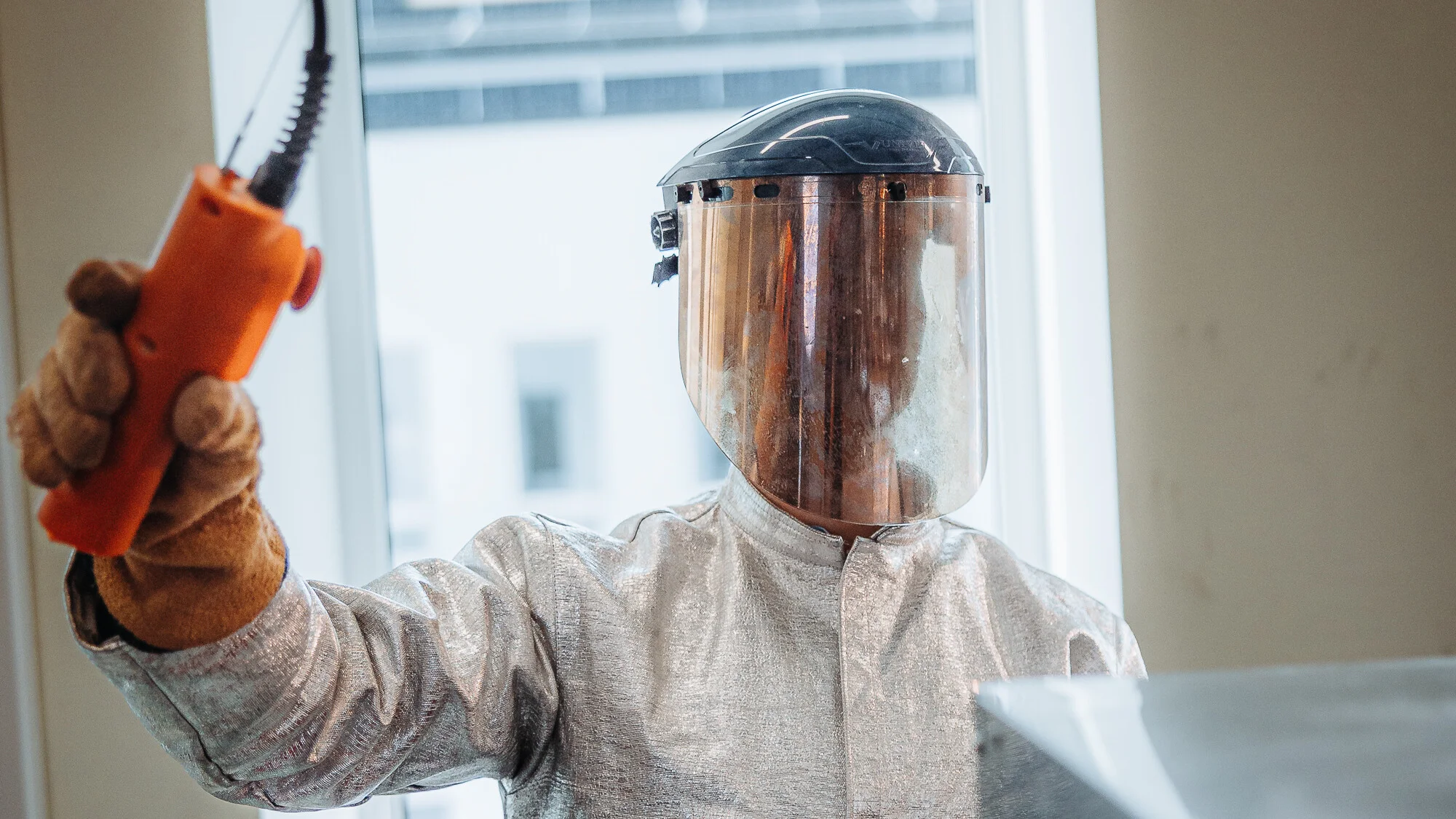Home » Scaling Deep-Tech Production: From GEN1 to GEN2 Reactor

In May 2024, the International Energy Agency (IEA) released the Global Critical Minerals Outlook 2024, predicting that by 2030, 93% of battery-grade graphite will come from China. The IEA identifies graphite as a mineral with very high geopolitical risks, highlighting that its supply can be easily disrupted, and prices could surge unexpectedly.
Apart from the significant geopolitical risks, outsourcing battery raw material production to China results in high CO2 emissions. Producing one ton of graphite generates an average of 13.8 tons of CO2-equivalent emissions, not including the additional emissions from transporting the materials to Europe
But Europe won’t need to rely on unsustainable graphite imports from China for much longer. The UP Catalyst team is producing graphite from CO₂ emissions and successfully transitioned to ton-scale production in May 2024, with the launch of the GEN2 reactor.
Sander Trofimov, Head of Production at UP Catalyst, shared the lessons he learned while scaling up deep tech production:
1. You can’t leap from kilogram-scale production per day to ton-scale production per day; intermediate steps are necessary. There’s a concept called Technology Readiness Level (TRL), which indicates the maturity of the technology. In the case of our technology, TRL is not mature. There’s no precedent for a reactor that produces carbon materials from CO2 emissions of the size we built.
Therefore, you either need to proceed gradually, carefully evaluating results after each step, or secure significant funding because the more you hurry, the more mistakes you make. For example, you might order an expensive component for the reactor, which usually takes time to produce, without waiting for the results of important tests. By the time you receive the component, you might realise from the test results that the design is flawed. You’d then need additional funds to order a new one
2. You can gain valuable insights by looking at other industries and analyzing the lessons they’ve learned. For instance, 30 years ago we did not have electric cars, but the car industry itself had a century of experience. Tesla, for example, started with a relatively low TRL but accelerated their development by drawing on expertise from the established car industry.
UP Catalyst was looking at the aluminum industry, with its 100 years of expertise. Although the technologies differ, there are significant similarities, and we learned a great deal from their experience.
3. You scale both the good and the bad. On a small scale, many problems go unnoticed. For instance, in a small laboratory reactor, if one wall bends by a fraction of a millimeter, it may not have any noticeable impact on the final product. However, when the reactor is scaled up to twenty times its original size, the distortion is also magnified many times, leading to a lower-quality product
4. Spend time on writing specifications and reviewing them withing the team. I suggest involving as many people as possible in reviewing specifications to ensure completeness and accuracy.
5. Identify what you can outsource, and what not. Initially, we outsourced a mechanical design engineer to visualize the reactor, as we thought it would save us time and money, but ultimately, we decided (and I never regretted it!) to hire a mechanical design engineer in-house. It significantly streamlined the process, as shorter communication lines lead to faster iterations. In just 1 month, we accomplished what we had been trying to do for the past 7 months with an outsourced designer.
6. You will always make mistakes, but it is important to decide, with which you can live, and which are critical. For instance, when encountering a problem like discovering a flaw in an already ordered component, it’s important to decide if it can still serve its purpose for testing or if you need to spend money and order a new one. Sometimes it also happens that minor issues you decide you can tolerate accumulate over time, eventually reaching a point where you see that everything falls apart. This is where I recommend using Failure Mode and Effects Analysis (FMEA) .
When weighing the decision to invest in a new component or accept one with a flaw, I often think of the worst-case scenario. What is the worst thing that can happen? If the potential consequences are manageable, I opt to proceed. However, there have been cases where what initially appeared non-critical unexpectedly impacted a project’s final stages.
Sander Trofimov and his team are already working on the next generation reactor, with even higher production capacity. By 2029, one industrial facility will produce 60 000 tons of carbon material per year, and the facilities could easily be multiplied and provide carbon materials just next to the gigafactory in any European country with clean energy mix.
To learn more about battery-grade graphite and carbon nanotubes by scheduling a call with UP Catalyst Material Expert: Calendly
Be part of the green revolution using sustainable carbon
nanomaterials and graphite made from industrial CO₂ emissions.
Be part of the green revolution using sustainable carbon nanomaterials and graphite made from industrial CO₂ emissions.
Contact us at info@upcatalyst.com
© UP Catalyst 2025 Privacy Policy